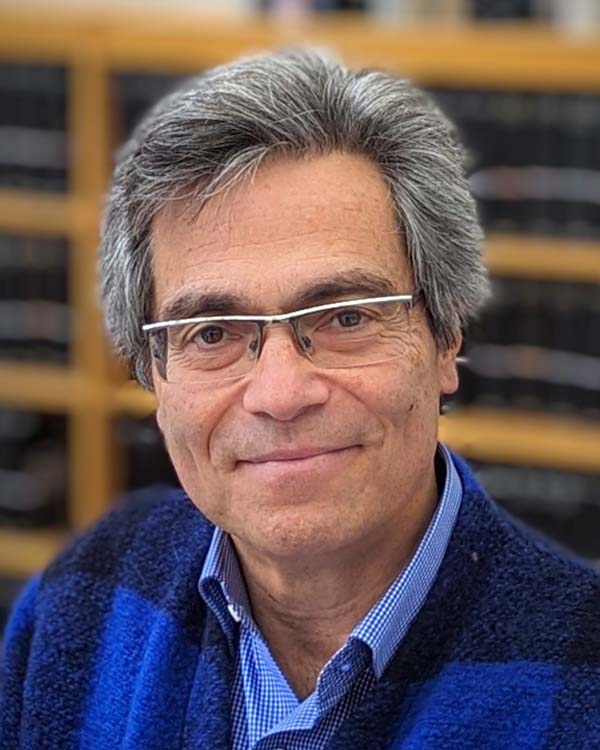This month we highlight the research of Fellows from the class of 2022–23 whose projects examine two very different kinds of institutions—prisons and museums—and consider how they viscerally enact the ways we think about pleasure, punishment, and social status, both inside and beyond their walls.

Chin Jou
The University of Sydney

Andrew McClellan
Tufts University
Chin Jou
Project: Captive Consumers: Prison Food in the Era of Mass Incarceration

Chin Jou is senior lecturer in twentieth-century US history at the University of Sydney, where she has taught since 2014, and has been visiting professor in the history of science at Harvard University. She is the author of Supersizing Urban America: How Inner Cities Got Fast Food with Government Help (University of Chicago Press, 2017), as well as academic journal articles on a range of topics related to US food policies, obesity, African American history, nutrition science, gender and diet culture, race relations, and the prison industrial complex. Her essays have also appeared in The Atlantic, Washington Post, Scientific American, and HuffPost. She is currently completing a book project illuminating late-twentieth century developments of the US carceral state through the lens of food. The project draws on previously untapped primary sources and approaches from history, American studies, science studies, sociology, and political economy.
What was the initial spark that led you to this project? What are the big questions that you are considering?
I first became curious about prison food in late 2015, when the New York Times ran a story about Nutraloaf, an unappetizing loaf made of various food scraps that corrections authorities use to punish incarcerated people and/or serve to people held in solitary confinement.
In the course of your research have you run across anything that genuinely surprised you? What can you tell us about it?
I was surprised to learn that, at some jails and prisons that have privatized food services, the same food services companies responsible for serving regular prison meals also hold commissary contracts allowing them to sell incarcerated people food. Given that this can incentivize the company holding both contracts within the same carceral institution to provide inadequate meals and thus create more demand for commissary items, it is surprising there are no laws or regulations that prohibit such arrangements.
What new avenues of inquiry do you hope this research will prompt or make possible in your field?
By emphasizing the considerable stakes of food in the carceral context, I hope this research encourages historians (and not just food historians) to take food more seriously and incorporate analyses of food into the broader stories they tell.
Andrew McClellan
Project: Rivals on the Fenway: Isabella Stewart Gardner, the Museum of Fine Arts, Boston, and the Destiny of the American Art Museum
Andrew McClellan is professor of art history at Tufts University. Trained in European art of the seventeenth to nineteenth centuries (PhD, Courtauld Institute, London), McClellan has written numerous books and articles on the history of art museums, art theory, collecting, painting, sculpture, and architecture. At Tufts, he has served in an administrative capacity as dean of academic affairs, director of Museum Studies, chair of the Departments of History of Art and Romance Studies, and chair of tenure and promotion. He has also taught for New York University Abu Dhabi and the University of Sussex (UK). His current project, Rivals on the Fenway: Isabella Stewart Gardner, the Museum of Fine Arts, Boston, and the Destiny of the American Art Museum, explores the simultaneous creation of two iconic institutions and their influence on the subsequent development of museum types, public and private, in the United States.

What was the initial spark that led you to this project? What are the big questions that you are considering?
I am fascinated by what goes into the creation of an institution—the imbrication of ideological, political, and economic factors, the force of personalities, the weight of identity and tradition. In my project, I focus on two neighboring Boston institutions that embraced the challenge of re-thinking established formulas for what an art museum should be in radically different ways: the (new) Museum of Fine Arts (1909) as a blueprint for a rational, public museology keyed on singular works of art and individual aesthetic response; and the Isabella Stewart Gardner Museum (1903) as the idiosyncratic, multi-sensory, private repudiation of the public museum. Beyond origin stories, I want to understand the lasting influence of the two museums from the perspective of today.
In the course of your research have you run across anything that genuinely surprised you? What can you tell us about it?
I have been impressed by the intellectual depth and vibrancy underpinning the MFA but equally so by the will, sophistication, and creative vision of Isabella Stewart Gardner. An august museum like the MFA cloaks its fascinating Gilded Age origins and commitments behind a veil of transcendent neutrality, penetrated only through archival excavation. Meanwhile the Gardner, offered to the visitor as left by its founder a century ago, is evidently straightforward, and yet not, for repeat visits never fail to delight through the revelation of fresh insights, layers of visual complexity, and play.
What new avenues of inquiry do you hope this research will prompt or make possible in your field?
While I expect a comparative historical analysis of two beloved institutions is of interest in itself, I hope ultimately my conclusions illuminate the inherited DNA of art museums in the United States to reveal opportunities for, but also challenges to, systemic change as we look forward.
